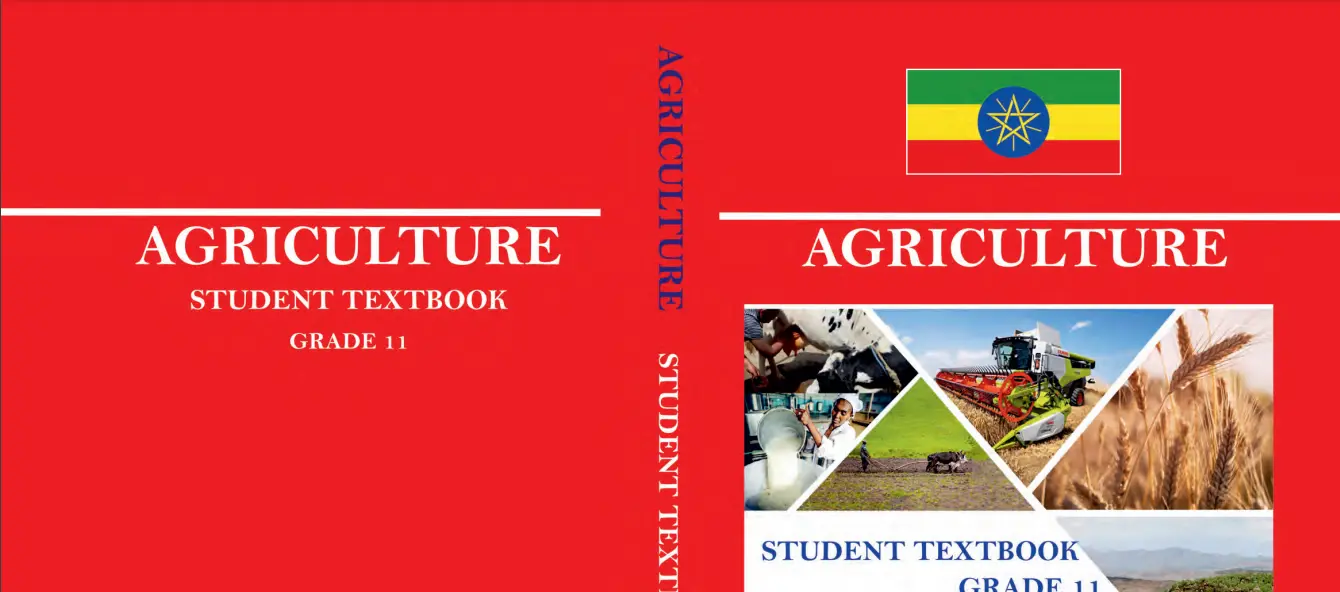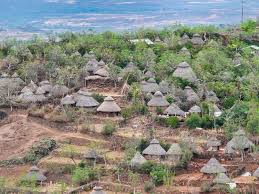The Ethiopian Ministry of Education is committed to fostering a deeper understanding of agriculture and its critical role in the country’s economy and livelihoods. To facilitate this, they have introduced an enlightening Grade 11 Agriculture textbook authored by experts in the field. In this article, we will explore this comprehensive textbook in detail and provide you with a direct link to download the PDF version.
22 MB
Meet the Authors and Contributors
Before we dive into the content, let’s recognize the dedicated authors and contributors who have brought this textbook to life:
- Writers:
- Seid Ali, MSc
- Shimelis Gizachew, PhD
- Editors:
- Bimrew Asmare, PhD (Content Editor)
- Fetene Regassa, PhD (Curriculum and Instruction Editor)
- Tamene Kitila, PhD (Language Editor)
- Illustrator:
- Yonas Azene, MSc
- Designer:
- Ephrem Alamrew, MSc
- Reviewers:
- Taye Tolemariam, Professor, PhD
- Teramage Tesfaye, PhD
- Evaluators:
- Daniel Taddesse, PhD
- Serawit Handiso, PhD
This collaborative effort ensures that the Grade 11 Agriculture textbook is a reliable and valuable resource for students and educators.
Exploring the Textbook’s Contents
The Grade 11 Agriculture textbook is organized into several units, each covering essential aspects of agriculture, animal husbandry, natural resources, nutrition, and more. Here is an overview of the textbook’s contents:
Unit 1: Introduction to Crop Production
- Definition of common terms used in crop production
- The origin of domesticated crops
- Status of crop production
- Classification of crop plants
- Cropping systems
- Indigenous knowledge in crop production
Unit 2: Field Crops Production and Management
- Cereal crops production and management
- Pulse crops production and management
Unit 3: Industrial Crops Production and Management
- Oil crops production and management
- Fiber crops production and management
- Sugar crops production and management
Unit 4: Introduction to Farm Animals
- Farm animal species
- Importance of animal production
- Constraints in animal production and their mitigation strategies
- Animal production systems
Unit 5: Animal Feeds and Feeding Practices
- Feed resources in Ethiopia
- Classification of feed resources
- Nutrient requirement of farm animals
- Feed formulation practices
- Feed conservation and compound feed manufacturing
Unit 6: Animal Genetics and Breeding Practices
- Introduction to animal genetics and breeding
- Breed improvement methods
- Farm animal reproductive technologies
- Animal identification and record keeping
Unit 7: Farm Animals Housing
- Significance of farm animal house
- Types of farm animal housing
- Guidelines for site selection and house construction
Unit 8: Basic Animal Health and Disease Control
- Introduction to animal health and disease control
- Major diseases of farm animals
- Internal and external parasites of farm animals
- Effects of diseases and parasites in animal production
- Prevention and control of common farm animal diseases
Unit 9: Dairy Cattle Production and Management
- Introduction to dairy cattle production and management
- Dairy cattle breeds and their selection
- Feeding management of dairy cattle
- Milk production and processing
- Dairy cattle housing management
- Major diseases of dairy cattle and their control methods
- Profitability in dairy business
Unit 10: Introduction to Natural Resources
- Definition and importance of natural resources
- Major types of natural resources
- Causes and consequences of degradation of natural resources
Unit 11: Management of Natural Resources
- Concepts of natural resource use
- Soil management
- Agricultural water management
- Forest and wildlife management
- Environmental management
- Types of indigenous knowledge applicable in natural resources management practices
Unit 12: Concepts of Biodiversity
- What is biodiversity?
- The scope of biodiversity
- Values and services of biodiversity
- Threats to biodiversity
- Biodiversity conservation and its status in Ethiopia
Unit 13: Climate Change Adaptation and Mitigation
- Definition of climate change and its variability
- Climate change and its effects
- Climate change mitigation strategies
- An overview of climate change adaptation strategies of Ethiopia
- Indigenous knowledge in climate change mitigation strategies
Unit 14: Mechanized Farming
- Introduction to mechanized farming
- Types of farm tools and equipment
- Uses of some farm tools and equipment
Unit 15: Introduction to Human Nutrition
- Definition of basic terms in human nutrition
- Nutrients and their functions
- Food groups and their sources
- Food and nutrition security
- Agriculture-nutrition linkage and nutrition-sensitive agriculture
- Malnutrition and its causes in Ethiopia
Unit 16: Diversified Food Production and Consumption
- Importance of diversified food production
- Dietary diversification strategies
- Nutrient enrichment strategies
- Indigenous knowledge in nutrition-sensitive agriculture
Download the Grade 11 Agriculture Textbook
This Grade 11 Agriculture textbook offers a comprehensive understanding of agriculture, natural resources, and nutrition. To access the PDF version of this invaluable resource.
Empower yourself with knowledge in the field of agriculture and related disciplines. Whether you’re a student, educator, or simply interested in these subjects, this textbook will be your guide to exploring Ethiopia’s agricultural landscape. Happy learning!





